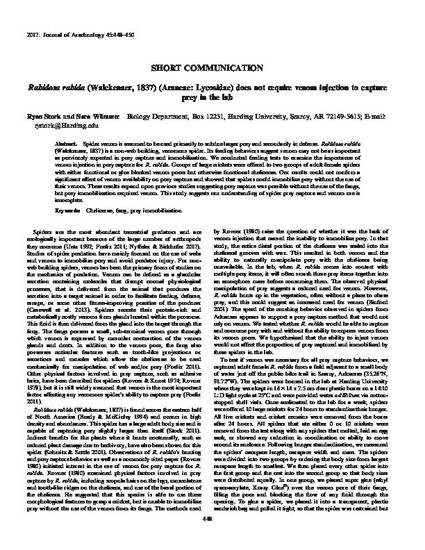
Article
Rabidosa rabida (Walckenaer 1837) (Araneae: Lycosidae) does not require venom injection to capture prey in the lab
Journal of Arachnology
(2017)
Abstract
Spider venom is assumed to be used primarily to subdue larger prey and secondarily in defense. Rabidosa rabida (Walckenaer, 1837) is a non-web building, venomous spider. Its feeding behaviors suggest venom may not be as important as previously expected in prey capture and immobilization. We conducted feeding tests to examine the importance of venom injection in prey capture in R. rabida. Groups of large crickets were offered to two groups of adult female spiders with either functional or glue blocked venom pores but otherwise functional chelicerae. Our results could not confirm a significant effect of venom availability on prey capture and showed that spiders could immobilize prey without the use of their venom. These results expand upon previous studies suggesting prey capture was possible without the use of the fangs, but prey immobilization required venom. This study suggests our understanding of spider prey capture and venom use is incomplete.
Keywords
- Chelicerae,
- fang,
- prey immobilization
Disciplines
Publication Date
2017
Citation Information
Ryan Stork and Sara Wilmsen. "Rabidosa rabida (Walckenaer 1837) (Araneae: Lycosidae) does not require venom injection to capture prey in the lab" Journal of Arachnology Iss. 45 (2017) p. 448 - 450 Available at: http://works.bepress.com/ryan-stork/1/
